Category Archives for "Weight Loss"
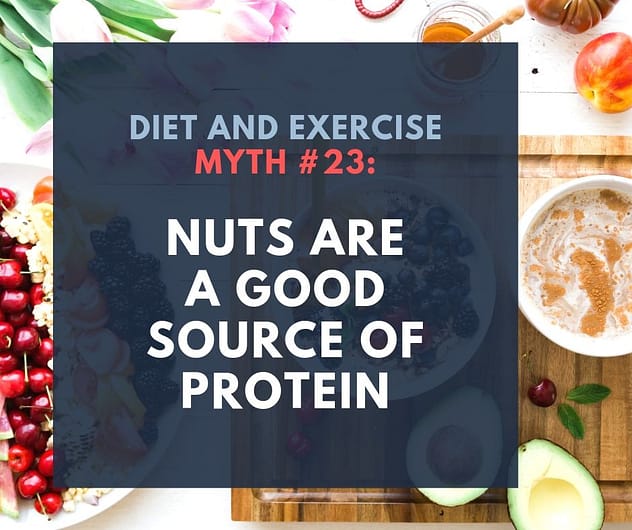

“Eating nuts for protein is like drinking martinis for olives”
I wish I could properly attribute that quote, but I don’t know who said it. I love it because it perfectly sums up my position on this subject, with a shot of humour thrown in. If it’s you I’m quoting, please let me know
The quote elegantly highlights this fact: knowing the mathematical percentage of a food that is protein is not particularly useful information in isolation.
Let me break that down:
If you’re trying to gain muscle while losing body fat, your best strategy is to maximise protein intake within the constraints of a caloric budget.
In this scenario, eating nuts for their protein content wouldn’t make any sense at all.
The reason for this is that nuts are very high in fat, which is the most calorie dense nutrient on the planet. The fat in nuts is healthy fat, but the quantity of nuts you would need to eat in order to get an appreciable amount of protein, would be completely outweighed by their super high caloric content.
More useful metrics for anybody in that situation would be:
As a food category, nuts would fail woefully on both those metrics (as it should do). On the other hand, fish, chicken and turkey breast would score very well indeed.
Eating fish, chicken and turkey (as examples) would align very well with the goals of somebody who is looking to gain muscle while losing body fat. Those foods would leave you with plenty of calories still available in your daily budget so that you never need to go hungry, while also providing adequate amounts of protein to meet your body composition goals.
VitalCapacity.live exists to help ordinary people like you transform your mind, body and spirit. If you have any questions or feedback, please don’t hesitate to get in touch with me.
You can contact me here: Todd@VitalCapacity.live.
Check out my Body Transformation Blueprint digital course. It teaches ordinary people how to look good, feel great, and get the body you've always wanted.
Ciao for now,

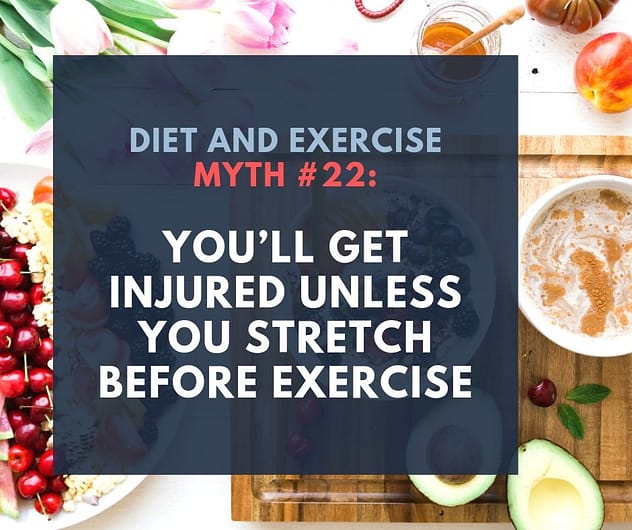

When done correctly, stretching is good for you in many ways, and many people enjoy it.
There is, however, no scientific evidence that a pre-stretched muscle is any less prone to injury.
The key to understanding this myth is to realise the important difference between static and dynamic stretching.
Static stretching is what you probably think of when you think of stretching. The objective of static stretching is to literally lengthen a muscle, and it takes a whole lot more than a single quick ‘footy stretch’ to accomplish.
Dynamic stretching is the kind that can actually help prevent injury, but it’s less about literally stretching a muscle and more about warming up your muscles and joints prior to heavy load bearing or intense activity.
Dynamic stretching involves gradually working up your joint or muscle to its full range of motion - including supporting structures like tendons, ligaments and cartilage - while increasing internal temperature and blood flow through the area.
So, while stretching doesn’t prevent injury, mobilisation and warming up certainly can.
VitalCapacity.live exists to help ordinary people like you transform your mind, body and spirit. If you have any questions or feedback, please don’t hesitate to get in touch with me.
You can contact me here: Todd@VitalCapacity.live.
Check out my Body Transformation Blueprint digital course. It teaches ordinary people how to look good, feel great, and get the body you've always wanted.
Ciao for now,

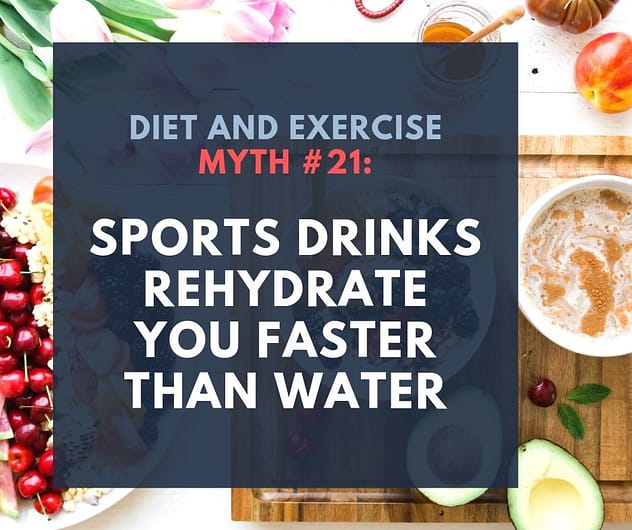

This is another myth perpetrated by global corporations through their clever advertising and marketing campaigns.
At the core of this myth is a misunderstanding of the difference between hydration and electrolyte balance. That clever advertising and marketing will often conflate the two.
The reality is that water is superior for hydration, and is obviously going to be a lot cheaper than sports drinks.
Most sports drinks, on the other hand, will definitely contain more electrolytes than water - which has none. Many people also find sports drinks to be more palatable than plain water, which may help them to drink enough if they would otherwise struggle to do so.
The importance of electrolyte balance is not in itself a myth, and sports drinks have their place there. Sweating and exercising for extended durations can cause depletion of chemicals like sodium, potassium and magnesium. These are important for power production and endurance.
But when thinking about electrolytes, be aware that most sports drinks also contain almost the same amount of sugar as soft drinks. Some carbohydrate intake may be desirable, but make sure to know how much you’re getting.
In summary, choose your sports drink carefully if you’re after electrolytes, and keep in mind that if you’re not an athlete, you don’t need sports drinks at all. If your focus is pure hydration, just stick with good old plain water – it’s usually the healthiest choice.
VitalCapacity.live exists to help ordinary people like you transform your mind, body and spirit. If you have any questions or feedback, please don’t hesitate to get in touch with me.
You can contact me here: Todd@VitalCapacity.live.
Check out my Body Transformation Blueprint digital course. It teaches ordinary people how to look good, feel great, and get the body you've always wanted.
Ciao for now,

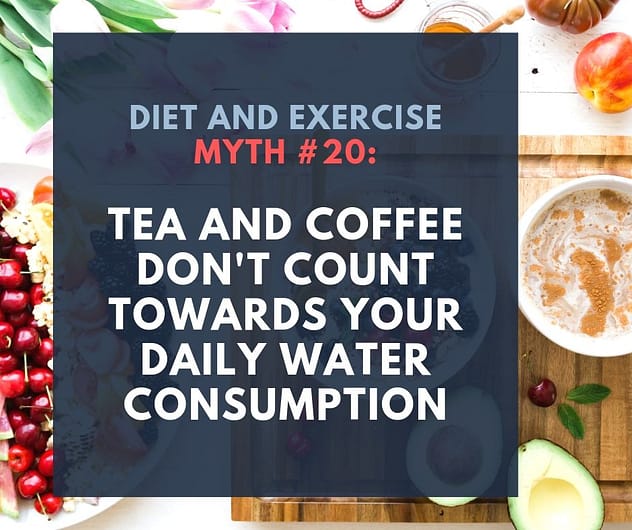

We all know how important it is to drink plenty of water and stay hydrated.
Individual requirements vary based on many factors, but as a general rule of thumb adult men should aim for at least 2.5 litres of water per day, women at least 2 litres, and children should be having at least 1 litre of water a day.
That’s total water intake, including from solid foods (which contribute on average around 20% of your total water intake).
While those recommendations are sound, they’re sometimes accompanied by a disappointing caveat: that you shouldn’t count tea and coffee towards your daily water consumption.
You might even have been led to believe that caffeinated drinks should be subtracted from your water total.
These are myths.
Multiple scientific studies have confirmed that caffeinated drinks are good sources of water, and they don’t cause dehydration.
Of course water is the best thing to drink for hydration, and it’s good for you in a million different ways. But you don’t have to worry that caffeinated drinks are counting against you when it comes to hydration.
VitalCapacity.live exists to help ordinary people like you transform your mind, body and spirit. If you have any questions or feedback, please don’t hesitate to get in touch with me.
You can contact me here: Todd@VitalCapacity.live.
Check out my Body Transformation Blueprint digital course. It teaches ordinary people how to look good, feel great, and get the body you've always wanted.
Ciao for now,

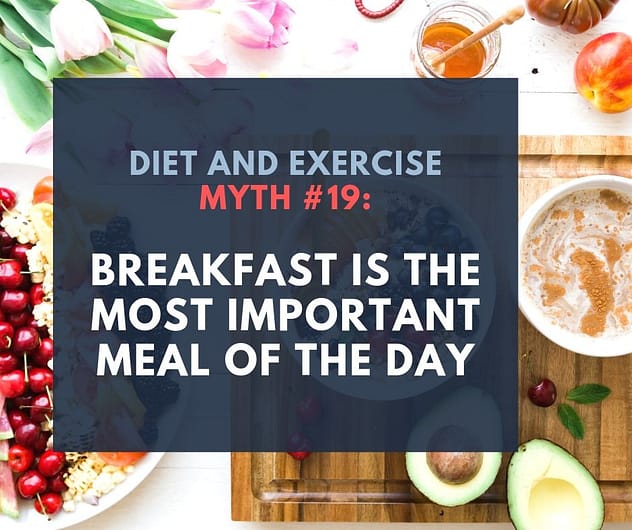

This myth has been around for years. You might even have been told this by a well-meaning grandparent.
Let’s bust this myth right up front: Recent Australian research has confirmed that eating breakfast does not help with weight loss or have any special effect on hunger. The meta-analysis found no evidence to support the idea that eating (or indeed skipping) breakfast is important for weight loss or gain.
Nor is breakfast special in terms of preventing afternoon hunger, or otherwise “setting you up for the day”.
The recent popularity of intermittent fasting strongly backs this point. A common IF regime known as 16:8 involves fasting for 16 hours, followed by an 8-hour feeding window. A huge number of people have had great success with this style of fasting, and most find it easiest to begin their 16-hour fast at bedtime, to take full advantage of everybody’s natural overnight fasting period. Typically, this regime has the participant eating their last food at around 8am at night, then fasting for the next 16 hours until about midday the next day.
Setting aside all the math and science, that is basically the same as simply skipping breakfast.
Interestingly, while the various studies to date are somewhat conflicting, it’s possible that if breakfast is important, it is important in this way: If you usually eat breakfast, you might help yourself to lose weight by skipping it. On the other hand, if you typically skip breakfast, you might help yourself to lose weight by eating breakfast instead.
The key point here though, is that it’s not the timing or frequency of your meals that makes the difference for weight loss or body composition. It’s mostly about how much food you eat; it’s a little bit about what type of food you eat; but it’s really not at all about when you eat it.
Whichever way you cut it, breakfast has given up its stronghold as the most important meal of the day.
VitalCapacity.live exists to help ordinary people like you transform your mind, body and spirit. If you have any questions or feedback, please don’t hesitate to get in touch with me.
You can contact me here: Todd@VitalCapacity.live.
Check out my Body Transformation Blueprint digital course. It teaches ordinary people how to look good, feel great, and get the body you've always wanted.
Ciao for now,

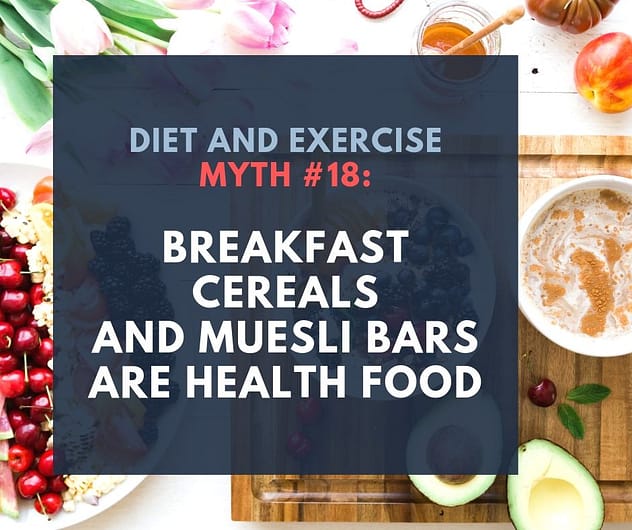

Well, some cereals and bars might be. The vast majority are not, however.
My aim with this myth is to point out how incredibly easy it is for food companies to pass off anything as health food.
Marketers are so good at this, that they can make you believe that anything is a health food without even specifically saying so. They’re very clever at using particular colours, themes, pictures and vague words on their packaging and in their marketing, to create a really misleading impression.
A very popular chocolate and hazelnut spread provides a great case study on this. It’s marketed heavily towards children and their purchasing parents, and it has a nutrition profile that is almost identical to cake icing (read: not very nutritional).
This spread is 56% pure sugar and 31% fat. Think about that for a moment – this product is almost 90% pure fat and sugar. The ingredient list is ordered by ingoing weight here in Australia; the first ingredient is sugar, and the second is palm oil.
You would assume that the makers of this product might find it somewhat challenging to pass it off as health food. But that is exactly their strategy, and it has been hugely successful for them over many years.
Plastered across the front of the product in big bold letters are statements like “With the goodness of whole nuts”, or “No artificial colors or preservatives”, or “Eat as part of a healthy breakfast”.
In their advertising, the company never explicitly claims that hazelnut spread is inherently healthy. However they have consciously chosen to position it as a health food – this has long been a core plank of their marketing campaign.
I’m only using this product as a case in point. A similar approach is used in many other food products of dubious health standing. Breakfast cereals and muesli bars are common examples, but you see it everywhere.
Advertising and marketing are powerful forces. It’s a critical modern skill to be able to understand nutrition panels and equip yourself to make your own independent assessments.
VitalCapacity.live exists to help ordinary people like you transform your mind, body and spirit. If you have any questions or feedback, please don’t hesitate to get in touch with me.
You can contact me here: Todd@VitalCapacity.live.
Check out my Body Transformation Blueprint digital course. It teaches ordinary people how to look good, feel great, and get the body you've always wanted.
Ciao for now,

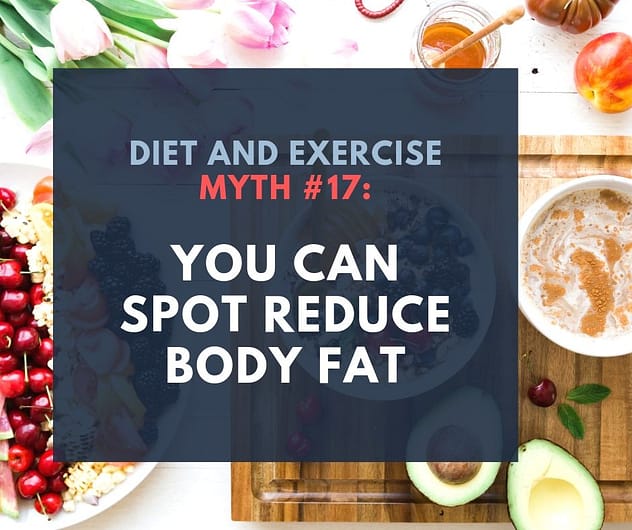

Many people are bothered by body fat in a particular spot, and wish they could just zap it out of there.
The area just below the navel is a common one for men, while for women it can often be the thighs or upper arms.
Everybody is different, but most people can identify a certain area of fat accumulation that they particularly dislike. To add insult to injury, these wobbly areas are often the first to appear when body fat starts to increase, and the last to disappear at the end of a weight loss campaign.
So it’s natural to want to focus fat-loss efforts on those particular areas. There is also no shortage of diets, supplements, and membership programs that will try to sell you on the idea that it’s possible.
Unfortunately, it’s not possible. The science is simply not on their side.
The reason that spot-reducing isn’t possible is down to the very fundamentals of how the body burns fat. Our cells hold fat as a form of stored energy. Under storage conditions, that fat exists as triglycerides. When required to fuel metabolism or activity, these triglycerides are converted into smaller components that enter the bloodstream and are converted into energy in cellular processes.
That response to exercise occurs in fat cells all over the body, wherever they might be. It’s not just the fat cells near the site of the movement or exercise that respond – that’s just not the way the physiology works.
Study after study has debunked the myth of spot reduction. Fat loss is generalised across the whole body.
The take-away here is that the best (in fact the only) ways to reduce fat in those stubborn or problem areas, are the very same ways of reducing body fat anywhere: Get into a reasonable calorie deficit, set up your macronutrient profile - including enough protein - and lift heavy things!
VitalCapacity.live exists to help ordinary people like you transform your mind, body and spirit. If you have any questions or feedback, please don’t hesitate to get in touch with me.
You can contact me here: Todd@VitalCapacity.live.
Check out my Body Transformation Blueprint digital course. It teaches ordinary people how to look good, feel great, and get the body you've always wanted.
Ciao for now,

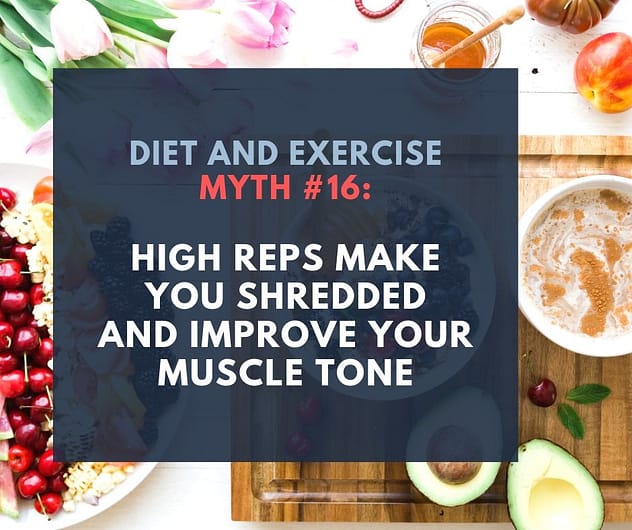

It’s something you’ve probably all heard at some stage.
A quick web search would turn up dozens of articles and gym programs telling you that high-rep, low-weight resistance training is the way to go if you want to get ‘toned muscles’ or ‘bring out your muscle definition’.
The first problem is that these are pretty vague terms in themselves (have you ever asked yourself what muscle tone really is, exactly, and why you would want it?).
Secondly, there is scant evidence that higher rep ranges will magically get you shredded.
The key to looking good and feeling great is to have a sufficiently low level of body fat, along with strong and functional muscles on your frame. And the quickest and easiest path to that is getting into a reasonable calorie deficit while progressively overloading your muscles on a well-programmed resistance training regimen.
Unless you have a specific medical reason not to, even as a beginner you should be aiming to perform heavy compound weightlifting in sets of 6-8 reps, using weights that are 75% or more of your one-rep maximum.
This style of training will burn about the same number of calories as a high-rep low-weight session would. However it leads to higher ongoing calorie burn in the hours and days afterwards, and it’s the quickest way to maximise muscle size and strength.
Big strong muscles, in turn, burn lots of calories 24x7 - even while you sleep.
Yay!
VitalCapacity.live exists to help ordinary people like you transform your mind, body and spirit. If you have any questions or feedback, please don’t hesitate to get in touch with me.
You can contact me here: Todd@VitalCapacity.live.
Check out my Body Transformation Blueprint digital course. It teaches ordinary people how to look good, feel great, and get the body you've always wanted.
Ciao for now,

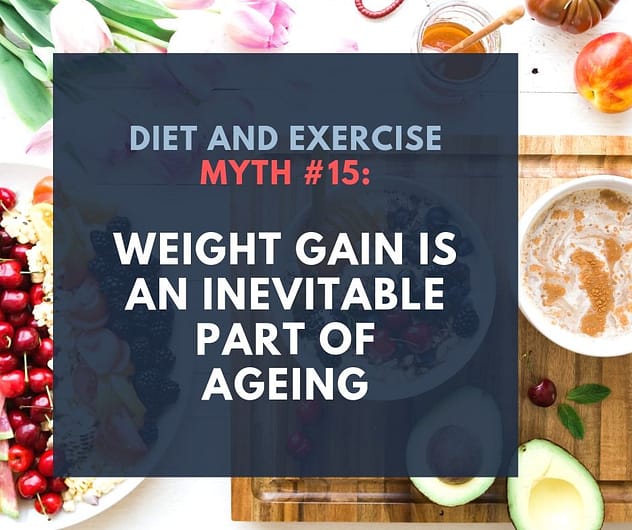

If you’re already past your thirties, did you notice your metabolism start to level down at some point?
Many people find it a bit harder to stay trim with each passing year, and that their waistlines don’t seem respond to dieting efforts quite as strongly as they once did.
Is this impression correct? Is the effect real?
It is true that your metabolism naturally slows down as you age, but it’s not by a lot - and it certainly doesn’t mean that weight gain is inevitable.
It’s estimated that your basal metabolic rate peaks somewhere in your late twenties, followed by a slow and gentle decline of about 10% by the time you hit your 50’s. The decline then starts to get a little steeper, reaching about 20% by the time you reach your 70’s.
As you can see, the rate of decline in base metabolic rate is quite small. And it turns out that your age, in and of itself, is not actually a big factor at all.
In fact, the more important drivers of a slowing metabolism are the lifestyle changes that tend to occur as you age. The great news here is that these lifecycle factors are 100% within your control, regardless of your age!
The two biggest drivers of slowing metabolism are:
So while getting older is inevitable, gaining weight is not.
All it takes to completely overcome the natural decline in metabolism is to stay active. Which of course is solid advice for anybody at any age. With respect to that activity, you really can’t beat resistance training - it’s not just for the young ones.
VitalCapacity.live exists to help ordinary people like you transform your mind, body and spirit. If you have any questions or feedback, please don’t hesitate to get in touch with me.
You can contact me here: Todd@VitalCapacity.live.
Check out my Body Transformation Blueprint digital course. It teaches ordinary people how to look good, feel great, and get the body you've always wanted.
Ciao for now,

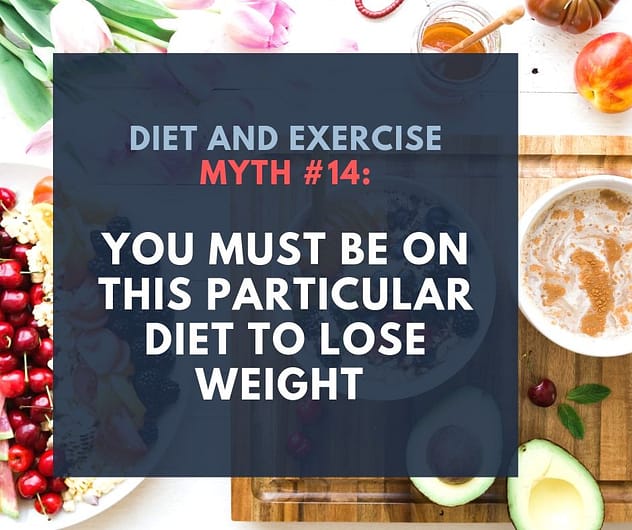

One of the defining characteristics of most trendy diets is that they’re essentially a collection of rules about eating.
Things you MUST do, and things you MUST NOT do.
But life isn’t that simple. And when you think about it, if the rules of, say, the Paleo diet were the only rules that worked, then Intermittent Fasting wouldn’t work. And if the rules of the carnivore diet were the correct rules, then a vegetarian diet wouldn’t work.
In reality, of course, there are ALL SORTS of eating strategies that different people have had huge success with.
The sort of mindset that’s promoted by restrictive diets is a step towards orthorexia. Orthorexia is a medical condition characterised by an obsession with eating foods that are ‘good’, and the systematic avoidance of foods that are ‘bad’.
Good and bad. Right and wrong.
That’s no basis for a healthy relationship with food! And it’s hardly conducive to enjoying your life, or consistency and sticking with your eating strategy over the long run.
Thankfully it’s a lot easier and more fun than that to look good, feel great, and get the body you’ve always wanted. There are just a couple of fundamental principles that need to be understood. If you can get yourself on the right side of these, most of the time, then you’ll get to where you want to go.
Those principles are (1) energy balance, (2) macronutrient balance, and (3) resistance training – in that order of importance.
But within those broad guard rails, there is practically unlimited variation and personalisation that you can adopt. And to be honest, you don’t even need to be within those guard rails 100% of the time. Just being close to the mark, most of the time, is more than enough to start seeing real benefits.
So please don’t feel like you need to learn all the rules and do’s and don’ts of a restrictive diet.
Instead, make friends with your food. And with yourself! You can easily manipulate your diet and exercise so that they’re tools that help you, rather than rules that confine you.
VitalCapacity.live exists to help ordinary people like you transform your mind, body and spirit. If you have any questions or feedback, please don’t hesitate to get in touch with me.
You can contact me here: Todd@VitalCapacity.live.
Check out my Body Transformation Blueprint digital course. It teaches ordinary people how to look good, feel great, and get the body you've always wanted.
Ciao for now,
